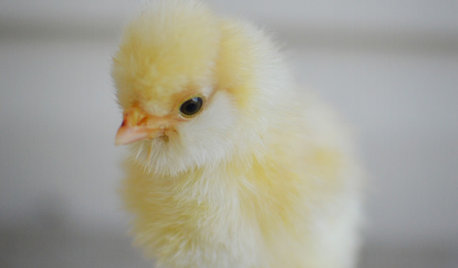GMO Threat
organicdan
14 years ago
Related Stories

GARDENING GUIDESBackyard Birds: Invite Entertaining Hummingbirds Into Your Garden
Hummingbirds — unique to the Americas — zip through open landscapes seasonally or year-round. Here’s how to attract them
Full Story
EDIBLE GARDENSHow to Grow Your Own Sweet Summer Crops
This guide will help any gardener get started on growing the freshest warm-season veggies and berries for summer
Full Story
GARDENING FOR BUTTERFLIESBe a Butterfly Savior — Garden for the Monarchs
Keep hope, beauty and kindness alive in the landscape by providing a refuge for these threatened enchanters
Full Story
HEALTHY HOMEGet the Lead Out: Lead Safety at Home
Keep your family safe by properly testing for and dealing with lead in old painted surfaces, water and soil
Full Story
MOST POPULAREasy Green: 23 Ways to Reduce Waste at Home
Pick from this plethora of earth-friendly ideas to send less to the landfill and keep more money in your pocket
Full Story
LIFEHow Your Landscaping Can Keep Burglars Away
Prevent home break-ins with strategic landscaping and good practices instead of menacing — and maybe less effective — measures
Full Story
PETSWhat You Need to Know Before Buying Chicks
Ordering chicks for your backyard coop? Easy. But caring for them requires planning and foresight. Here's what to do
Full StoryMore Discussions







albert_135 39.17°N 119.76°W 4695ft.
gershon
Related Professionals
Tomball Landscape Architects & Landscape Designers · Pelham Landscape Contractors · Anderson Landscape Contractors · Annandale Landscape Contractors · Bell Gardens Landscape Contractors · Rancho Santa Margarita Landscape Contractors · Seven Hills Landscape Contractors · Tigard Landscape Contractors · Greenfield Landscape Contractors · Northlake Landscape Contractors · Cave Spring Decks, Patios & Outdoor Enclosures · Bonney Lake Decks, Patios & Outdoor Enclosures · Leander Decks, Patios & Outdoor Enclosures · Lincolnton Decks, Patios & Outdoor Enclosures · Roanoke Decks, Patios & Outdoor EnclosuresMichael
Dan _Staley (5b Sunset 2B AHS 7)
greenleaf_organic
sandhill_farms
Lloyd
peter_6
Lloyd
greenleaf_organic
gargwarb
greenleaf_organic
gargwarb
greenleaf_organic
organicdanOriginal Author
Lloyd
gargwarb
Dan _Staley (5b Sunset 2B AHS 7)
organicdanOriginal Author
sandhill_farms
sandhill_farms
Dan _Staley (5b Sunset 2B AHS 7)
Lloyd
greenleaf_organic
Lloyd
greenleaf_organic
Lloyd
henry_kuska
Dan _Staley (5b Sunset 2B AHS 7)
henry_kuska
Lloyd
Dan _Staley (5b Sunset 2B AHS 7)
Lloyd
Dan _Staley (5b Sunset 2B AHS 7)
albert_135 39.17°N 119.76°W 4695ft.
lurkandkibitz
greenleaf_organic
Michael
organicdanOriginal Author
jamesmoore7122
TheMasterGardener1
Tiffany, purpleinopp Z8b Opp, AL
User
elisa_z5
User
User
elisa_z5
peter_6
User
peter_6